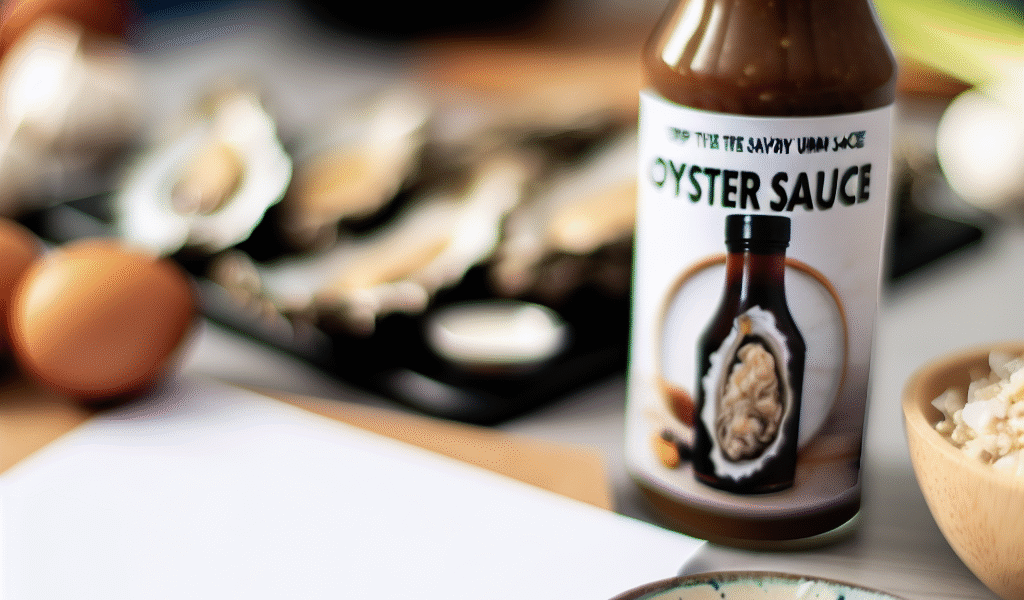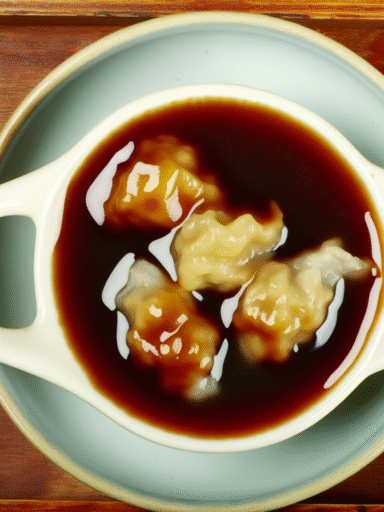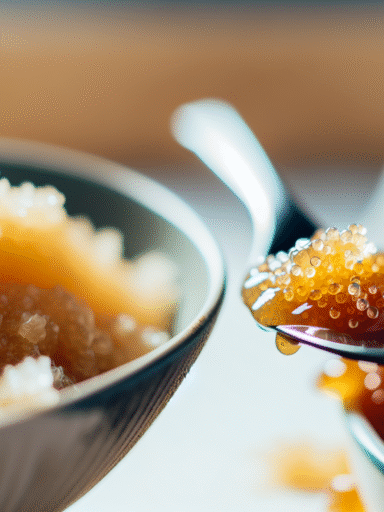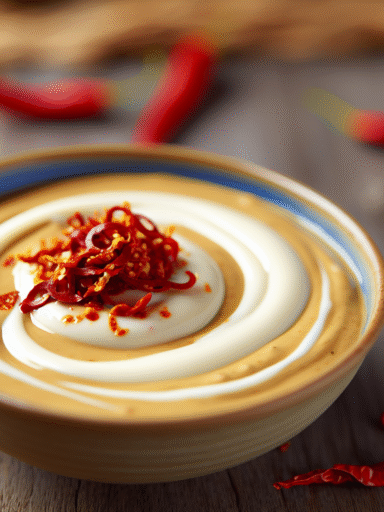Oyster Sauce
Discover the rich, savory magic of oyster sauce—an umami powerhouse that transforms simple dishes into culinary delights. This essential Asian condiment blends the briny sweetness of oysters with a deep, caramelized flavor that’s both versatile and unforgettable.
Tags / Categories
- Flavor Profile: Savory, Umami, Slightly Sweet, Salty
- Main Ingredients: Oysters, Soy Sauce, Sugar, Cornstarch
- Region: East and Southeast Asia
- Usage: Stir-fries, Marinades, Dipping Sauces, Glazes
Quick Info Box
- Prep Time: 10 minutes
- Cook Time: 15 minutes
- Total Time: 25 minutes
- Difficulty Level: Easy
- Yield: About 1 cup (240 ml)
Ingredients List
- 250g fresh oysters (including their juice)
- 1/2 cup water (120 ml)
- 2 tablespoons light soy sauce
- 1 tablespoon dark soy sauce
- 1 tablespoon oyster sauce (optional, to boost flavor)
- 1 tablespoon sugar (palm sugar works beautifully)
- 1 tablespoon cornstarch mixed with 2 tablespoons water (slurry)
- 1 teaspoon sesame oil
- Pinch of salt, to taste
- Optional: 1 clove garlic, finely minced for extra aroma
Making Oyster Sauce From Scratch: Step-By-Step
Crafting oyster sauce at home is easier than you might think, and the result is wonderfully fresh and flavorful. Ready to give it a go? Let’s walk through it together.
- Prepare the oysters: Gently rinse the oysters in cold water, reserving the oyster juice that drips from them—this liquid is packed with flavor and will be the base of your sauce.
- Simmer the oysters: In a small saucepan, combine oysters, oyster juice, and water. Throw in that minced garlic if you’re feeling adventurous. Bring to a gentle simmer over medium heat, letting it bubble quietly for about 10 minutes. Your kitchen will smell amazing right about now.
- Extract the liquid: Using a fine sieve or cheesecloth, strain the oyster mixture into a bowl, pressing lightly to get every drop of richness. Discard solid bits or save them for a seafood stew.
- Cook down the sauce: Return the liquid to the saucepan. Add light soy sauce, dark soy sauce (for color), sugar, and a pinch of salt. Stir to combine, then simmer gently, reducing by about a third. This concentrates those lovely oyster flavors.
- Thicken the sauce: Give your cornstarch slurry a quick stir, then slowly pour it into the simmering liquid while whisking continuously. The sauce will begin to thicken; take it off the heat once it coats the back of a spoon beautifully. Don’t stress if it’s a little chunky — that’s homemade charm.
- Final touch: Stir in the sesame oil for a subtle nutty aroma and glossy finish. Let it cool, then transfer to a clean jar.
Serving Suggestions
Oyster sauce is like a flavor secret weapon—once you have it, your stir-fries, veggies, and even grilled meats will never be the same.
- Toss it with wok-fried greens like bok choy or broccoli for a simple, flavorful side.
- Add a splash when marinating chicken or beef to deepen the savory notes.
- Drizzle over steamed fish or tofu for an effortless umami boost.
- Stir into noodles or fried rice to enrich every bite without overpowering.
- Use as a dip base by mixing with a little chili and lime for a zesty snack sauce.
Origin & History
Oyster sauce has roots in southern China, dating back to the late 19th century. Legend credits a Cantonese chef who accidentally overcooked oysters, revealing a dark, flavorful reduction that later became commercially bottled. It’s since become a pantry staple across East and Southeast Asia, celebrated for its unique way of enhancing dishes with umami without overwhelming the palate. Fun fact — oyster sauce was officially introduced to the Western world largely thanks to the global popularity of Chinese cuisine.
Variations & Substitutions
If you’re watching salt or avoiding shellfish, no worries. Here are some tweaks to keep your dishes tasty and inclusive:
- Vegetarian/Vegan Oyster Sauce: Mushroom-based sauces, especially those made from shiitake or king oyster mushrooms, mimic that deep umami flavor beautifully.
- Less Salt: Use low-sodium soy sauce or reduce added salt. Adding a splash of mushroom broth can boost flavor without extra sodium.
- Thicker Sauce: Increase cornstarch slurry slightly for a more glaze-like consistency, perfect for coating meats.
- Regional Twists: Thai versions often add palm sugar and fish sauce for complexity; feel free to experiment with these flavors.
Storage & Make-Ahead Tips
This sauce keeps well in the fridge for up to two weeks when stored in an airtight container. Give it a good shake or stir before using, as natural separation may occur. While freezing isn’t usually necessary, you can freeze small portions in ice cube trays for up to three months—just thaw in the fridge overnight. Reheat gently over low heat to prevent breaking the sauce.
Nutritional Information (per 1 tablespoon serving)
- Calories: ~15
- Protein: 1g
- Carbohydrates: 3g (mostly sugar)
- Fat: 0g
- Sodium: 450mg (can vary based on soy sauce used)
Related Sauces / Try Next
- Hoisin Sauce – Sweet and spicy, great for glazing and dipping.
- Soy Sauce – The salty foundation of many Asian dishes.
- Fish Sauce – A pungent, salty staple in Southeast Asian cuisine.
- Black Bean Sauce – Fermented, savory, with a punchy flavor.
FAQ
Q: Can I make oyster sauce without fresh oysters?
A: Yes! You can substitute with canned oysters and their juice if fresh aren’t available. Mushroom-based sauces also work if you want a vegetarian option.
Q: Why is oyster sauce so dark?
A: The color comes from caramelized sugar and dark soy sauce added to balance the oyster’s natural brininess and deepen the flavor profile.
Q: Can homemade oyster sauce be used the same way as store-bought?
A: Absolutely! Homemade sauce has a fresher, more nuanced taste and can be used interchangeably in recipes calling for store-bought oyster sauce.
Oyster sauce is much more than a pantry staple—it’s a little jar of magic that adds soul to your cooking. Whether made at home or purchased, understanding its origins and crafting your own version lets you truly appreciate this umami-rich culinary gem. So go ahead, experiment a bit, and let your taste buds dive into that savory goodness!



